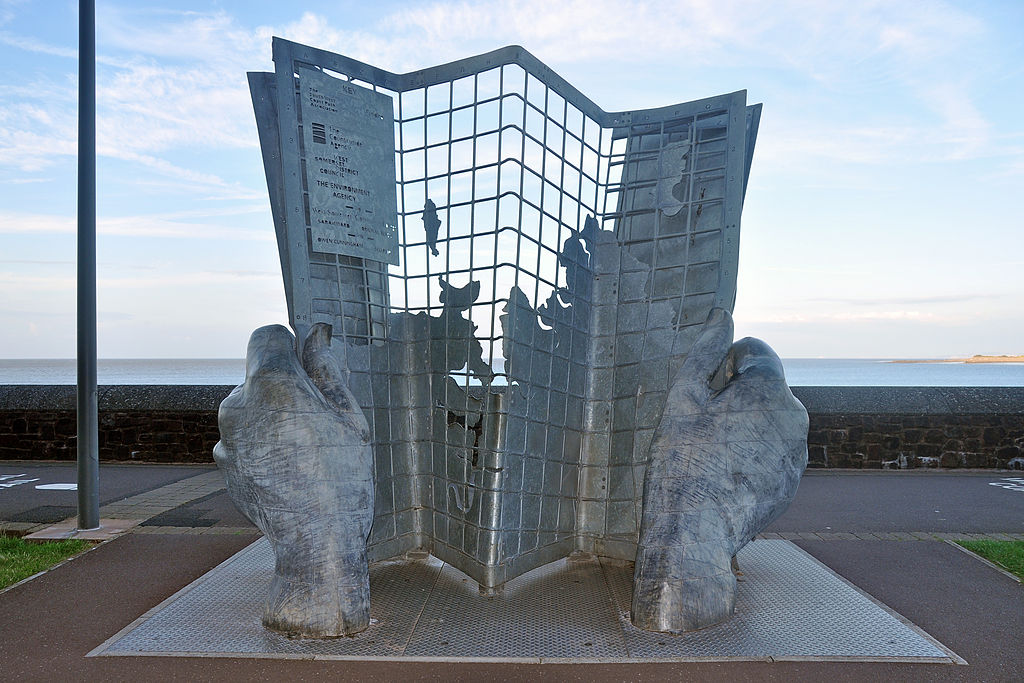I had a nice email back-and-forth with a colleague the other day discussing a new trend she was seeing in the field. As the conversation wound down to a close, I wrote that I looked forward to seeing her at the Apra International conference (Pittsburgh! August 8-11!). She came back for one last reply, saying that after nearly 20 years of going, the vice president of fundraising was asking her for justification of the expense. [Read more…]
Olympic-Sized Appreciation: #ResearchPride
 The past two weeks, there’s been a whole lot of Olympics-watching in my household. You too? I don’t know what it is about curling, I don’t even care who’s throwing the stones, I will watch it. (and GO Team USA-men on your gold medal!).
The past two weeks, there’s been a whole lot of Olympics-watching in my household. You too? I don’t know what it is about curling, I don’t even care who’s throwing the stones, I will watch it. (and GO Team USA-men on your gold medal!).
The same goes for ice dancing (did you see those smokin’-hot Canadians?? Wow!) and figure skating. I honestly can’t tell the difference between a lutz, a toe loop, and a Salchow, but the fact that they nail the landing 9/10s of the time is just astonishing.
It was while watching the fortnight highlight farewell review by the NBC Olympic Ice commentators – Scott Hamilton, Liam McHugh and Tanith White – that one of them said in closing how grateful they were to their off-camera research team for helping them be as informed and prepared as they were. That they couldn’t have done their job without them. [Read more…]
Innovation in Philanthropy
Creativity abounds everywhere in the Third Sector, from service providers in the field, to fundraising offices managing more on a shoestring, to a new breed of funders (and well-established funders, too) thinking up new ways to engage with, spur forward, and support their philanthropic priorities. In this week’s article, HBG Senior Researcher Grace Chandonnet shares some of the interesting and creative ways funders are having an impact in the world today. ~Helen
 Lately I’ve been thinking about the innovative ways that young entrepreneurs are actively engaging in philanthropy. As my colleague Elizabeth Roma writes, the philanthropy landscape is ever evolving and innovating and appears to be picking up the pace of change exponentially in recent years in what is being referred to as the New Gilded Age. Elizabeth touches on innovative philanthropic vehicles such as the Emerson Collective and the Chan Zuckerberg Initiative, as well as B-Corps and impact investing. [Read more…]
Lately I’ve been thinking about the innovative ways that young entrepreneurs are actively engaging in philanthropy. As my colleague Elizabeth Roma writes, the philanthropy landscape is ever evolving and innovating and appears to be picking up the pace of change exponentially in recent years in what is being referred to as the New Gilded Age. Elizabeth touches on innovative philanthropic vehicles such as the Emerson Collective and the Chan Zuckerberg Initiative, as well as B-Corps and impact investing. [Read more…]
The Palm Beach Season

“Palm Beach – Flagler Museum Courtyard” Photo by Roger W via Flickr
This week, HBG Senior Researcher Kelly Labrecque takes us into the sunny world of the Palm Beach season, that period of time when the wealthy leave northern climates and head to the tonier parts of Florida. The charity ball scene this year will be very different from years past – what will it mean for the nonprofits who benefit from them? ~Helen
As temperatures in the Northeast drop below 40 degrees, so begins the migration of the wealthy to their seasonal homes to wait out winter. Perhaps the most famous of these destinations is Palm Beach. Part of an 18-mile barrier island in Southeastern Florida, the town is known for its pristine beaches, mega-yacht clubs, five-star restaurants, PGA-rated golf courses, and elite equestrian facilities.
For more than a century, Palm Beach has attracted and played host to the world’s rich and famous. While there, these “snowbirds” generate millions for charity and the local economy. As a result, charitable organizations have come to recognize Palm Beach as a philanthropic hub for the cultivation and stewardship of major donors. [Read more…]
‘Tis the Pre-Season
Giving Tuesday marks the opening of the Giving Season, that time of year when generous donors help plant the bulbs for change, and nonprofits nurture and grow them.
I’ve been planting bulbs of my own this past week (daffodils and crocuses; also testing out if lavender seeds actually work), and that activity gave me loads of time to think about how a little preparation now makes a world of difference in a period of time that’s not all that far ahead.
In the fundraising intelligence world, we can do that, too. Here at HBG, we’re talking with clients now about how they can be prepared for next year.
What is your team doing to be sure you’re filling the pipeline with new prospects who are interested in your cause? [Read more…]
More Giving, Thanks to Thanks Giving
When I read this week’s featured article by Kathy Mills on the Apra-Carolinas website, I knew I had to ask share it with you today. Kathy is Senior Donor Identification Analyst at Wake Forest Baptist Medical Center, and I wanted you to read her description of the way that their prospect research and annual giving teams partner together.
They’re making relationship magic – joining their talents to give sincere thanks to donors, and it’s a great lesson – for this season and all year round.
Happy Thanksgiving to you and yours, and warm thanks to Kathy and the kind folks at Apra-Carolinas for allowing us to re-share this!
The Impact of Thanking Annual Fund Donors
When I was younger, my mother forced me to write thank you notes to anyone who had given me a gift for my birthday. It seemed like a chore at the time, but as an adult, I came to appreciate when I was thanked for sending a gift – and I certainly remembered those that never thanked me. Today, sometimes a simple “thank you” seems like a dying art.
As nonprofit organizations, it’s critical that we thank our donors promptly. That $25 annual fund donor could turn out to be a $25,000 donor in the future if he or she feels appreciated right from the start. But every organization sends a thank you letter. What if you took it one step further? [Read more…]
Creating a DIY wealth spreadsheet

“Sculpture at end of SW Coast Path in Minehead” by Nilfanion (Own work) [CC BY-SA 3.0] via Wikimedia Commons
My colleague Kenny Tavares frequently gets tasked with creating reference resources for the team to use. He’s the Excel Guru and the Macros Whisperer, and the staff meetings when he demonstrates his latest efficiency tech-bit are always highly anticipated by all of us. This week Kenny shares some of background data he sourced for one of his latest automated worksheets. Enjoy! ~Helen
Oh Happy Day! You have been asked to assess the wealth of an individual and that person works for and sits on the boards of publicly-traded companies, has several real estate properties listed in their name, and a yacht-load of tangible assets. It couldn’t be easier and you display the calm of someone who has chosen an easy profession…and then you wake up. [Read more…]
Don’t make the real estate mistake

“home yellow” Photo by nikcname (Own work) [CC BY-SA 4.0], via Flickr
Everyone commiserated with one HBGer’s lament that some development offices don’t include primary residence – or even any real estate – in their capacity ratings.
And I’ve heard people say on multiple occasions, “Our prospective major donor is never going to give us their house (or sell their house and give us the money), therefore we shouldn’t include it in our ratings.”
Which is true. The donor is probably never going to give your nonprofit the deed to the house they’re currently living in. (<stage whisper>: I won’t mention “planned gift” at this point, okay?)
THE THING IS…
They are also never going to give you their salary (unless they’re Chris Long), sell their yacht, their plane share, or their horses to make a donation, either. They won’t liquidate their art collection, grandma’s diamonds, or that vintage Chanel worn to last week’s benefit. The privately-held company they own will remain unsold. Likewise the stock options that don’t convert for another 5 years.
If the argument is that they’re not going to sell their house, then we should disqualify those other assets, too, right? Because they are never going to give them to you, either.
You can’t pick and choose.
If you randomly take one non-liquid asset off the table, you should take all of them. And you’d never do that, right? It would be illogical.
Figuring out someone’s gift capacity is hard enough to begin with. Purposefully handicapping yourself makes absolutely no sense to me.
I UNDERSTAND
Real estate certainly isn’t the be-all-end-all, but like all of those other assets I mentioned, if nothing else, it’s an indicator of wealth. But I think there’s much more to real estate – even primary real estate – that should be considered.
To start with, it’s solid information. We’re already operating in a realm where anything concrete is in short enough supply. So why ignore a valuable, real, solid, asset?
Also:
Real estate is a green flag. When I’m trying to find new prospects in a sea of regular donors I may skip over someone who lives in a $850,000 home in San Francisco, but I’m definitely not going to ignore a donor who has a $850,000 condo in Aspen. I’m now going to search to find a separate primary residence.
Real estate is a red flag. I was once asked to research someone who had approached an organization out of the blue offering to make a multi-million-dollar gift. What I discovered – by just looking into the prospect’s primary residence – was the first red flag that probably saved the nonprofit from months of wasted time – or worse.
Further:
100% of the world’s high net worth individuals (HNWI) own real estate. And for the more privacy-aware among them, real estate is sometimes the only hard asset we can find for them. Knowing what kind of real estate they own gives you clues into the type of personality they are, how they may want to be cultivated, and what philanthropic investments may interest them. For example:
The billionaire who owns a 20-bedroom party house on Miami Beach is very different from the billionaire living in a three-bedroom ranch in Omaha. Their real estate choices can give you clues to their lifestyle and engagement preferences. One may be a better prospect for naming opportunities with big splashy events. The other may prefer funding boots-on-the-ground clinics for vaccine delivery and student scholarships.
In addition:
We can use real estate for estimates. According to the Capgemini World Wealth Report, real estate accounted for 17% on average of a HNWI’s total assets globally last year. (In the US, it’s 11% of total assets; in Europe it’s 18%). So if all you can find is someone’s real estate holdings, you can still come up with a decent guesstimate of their total assets using that one ratio if they’re in the HNW classification.
And finally:
Real estate is critical to planned giving. There, I’ve said it, and this is really important.
Let’s say you work at a small college and you’ve got childless husband-and-wife alumni couple with a ski resort condo, a vacation home at Los Sueños in Costa Rica and a primary residence in Boston’s Back Bay. They’re consistent donors and lifelong volunteers to the college. There’s no question that the planned giving officer needs to know about them.
And in this case, it’s not only the real estate that’s interesting, but also what it tells us about these special people. Here is an active, outdoorsy couple who possibly enjoy golf, tennis and skiing. A pair that enjoys regular seasonal travel, but whose lifestyle may require extra cultivation time because they are probably not in town very often. What decisions do you need to make about how to engage them?
Look at all the information that just knowing about real estate gives us!
ONE LAST THING
In case you’re wondering, here at HBG we do include primary residence in our total visible wealth calculations on profiles.
We believe it’s a real asset. I think you should, too.
The Secret to Great Event Briefings
This week’s article is brought to you by HBG Senior Researcher, Jennifer Turner, who has a lot of experience (probably more than she thought she’d ever have!) writing event briefings. Lucky for us, she’s happy to share some great tips here. ~Helen
We have officially entered the fall season. School vacation is over. Our donors have returned home from their summer residences. And we are all settling back into the “normal” routine.
For many organizations, this means the start of event season. Perhaps you work in higher education and have an upcoming event for new parents, as well as Homecoming weekend. Or maybe your organization just wants to get in a few events during the fall months before the holidays start monopolizing everyone’s calendar. [Read more…]
POISEd for Success
 This week HBG team member Angie Herrington shares some great tips to make sure you don’t lose track of an under-the-radar, future group of supporters to your nonprofit. She’s not totally convinced that she’s got the perfect acronym yet, but IMO she’s on the right track! ~Helen
This week HBG team member Angie Herrington shares some great tips to make sure you don’t lose track of an under-the-radar, future group of supporters to your nonprofit. She’s not totally convinced that she’s got the perfect acronym yet, but IMO she’s on the right track! ~Helen
Fundraising is no different than any other profession with our acronyms and jargon. Some are expedient (DO, MGO, 990, CRM, ‘soft credit’) and some make me think too hard and wonder if we’re making it up (LYBUNT, SYBUNT, and CRUT).
Some of our legacy terms can also be polarizing. Ever dropped the word “suspect” on PRSPCT-L over the past 20 years? If you’re feeling sassy, try that one and let me know how it works out for you. [Read more…]
- « Previous Page
- 1
- …
- 3
- 4
- 5
- 6
- 7
- …
- 12
- Next Page »




